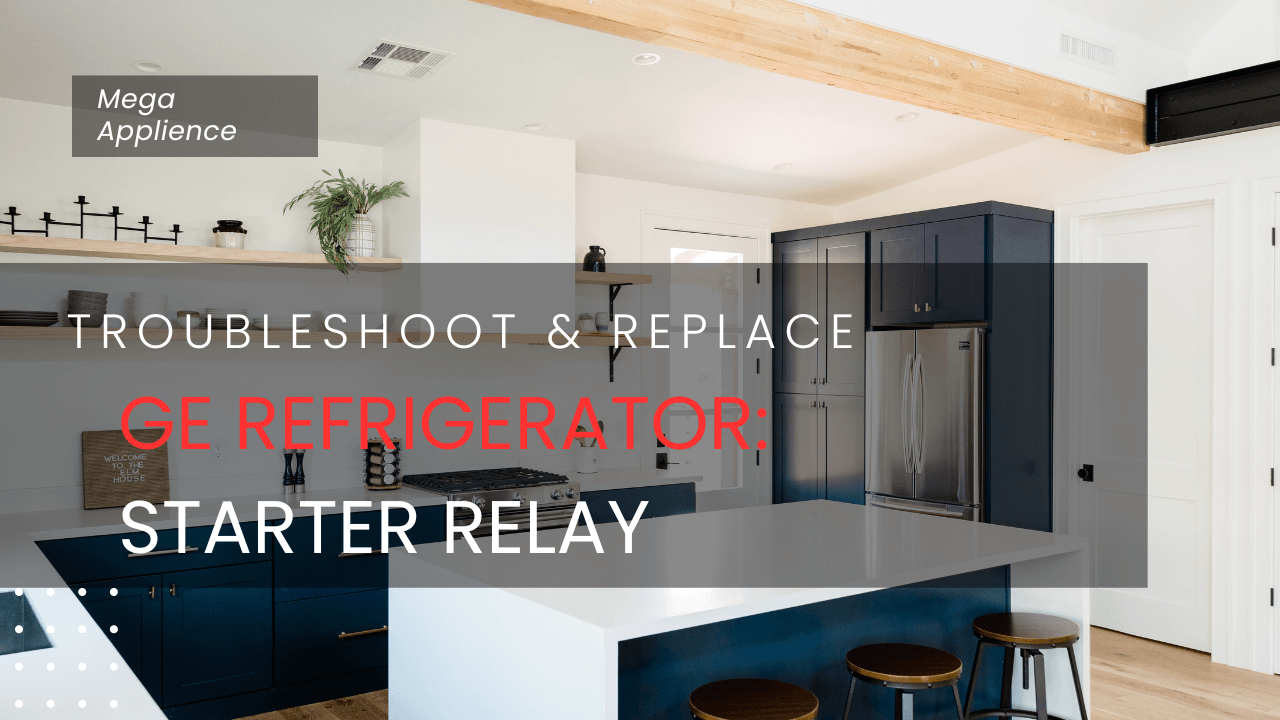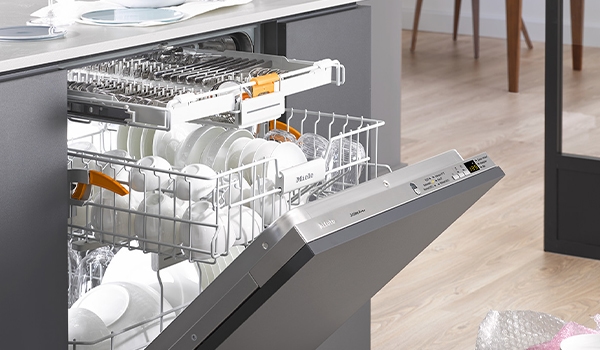How to Do It Yourself: Replace the GE Refrigerator Starter Relay
A refrigerator is more than a box that keeps your food cold; it's an essential appliance that contributes to the comfort and functionality of your home.
Proper appliance maintenance ensures the longevity of your fridge and helps you avoid common fridge problems that could be costly in the long run.
The good news is that with regular upkeep, you can easily extend the lifespan of this appliance.
Common Refrigerator Issues and Solutions
Refrigerators can have various issues—temperature irregularities, strange noises, and leaks, to name a few. Sometimes the problem can be traced back to a small yet significant part: the GE starter relay.
Knowing how to identify and solve these issues yourself can save you both time and money.
That's where refrigerator troubleshooting and understanding the importance of fridge upkeep come into play.
Determining if the Starter Relay Needs Replacement
The starter relay functions as a switch that helps your refrigerator's compressor to start. Without a properly functioning relay, your fridge can't maintain its temperature, which could lead to food spoilage. So, it's crucial to diagnose relay problems early on.
Signs of a Faulty Starter Relay
Your refrigerator gives you subtle signs when the GE starter relay starts to fail. These symptoms can include strange clicking noises coming from the back of the fridge, temperature inconsistencies, or even the fridge not starting at all.
Paying attention to these signs and performing a relay diagnosis can prevent bigger issues down the line.
Importance of Proper Diagnosis Before Attempting Repair
While it's tempting to jump right into the repair process, it's crucial first to confirm that the starter relay is indeed the culprit. Testing the starter relay involves some basic electrical component checks.
For this, you'll need a multimeter to test the relay's resistance and continuity. Without proper diagnosis, you risk replacing a part that might not be broken, costing you extra time and money.
Precautions Before Repairing a Refrigerator
Before you dive into any repair, it's essential to consult the user manual guide for your specific refrigerator model. This will provide you with detailed instructions and cautions that are important for electrical safety.
You don't want to be halfway through the repair and realize you've missed an important step.
Safety Measures Before Starting the Repair
Safety first! Ensure you unplug the fridge from the electrical socket to avoid any electrical shocks. It's also wise to put on safety gloves and goggles to protect yourself from any unexpected incidents.
Having a pre-repair checklist can also be incredibly helpful in ensuring you've taken all necessary precautions.
Tools Required for the Repair
You won't need a vast array of tools, but a few essentials will be required. Most likely, you'll need a screwdriver to remove the refrigerator back panel, a pair of needle-nose pliers for wire connections, and a multimeter for testing electrical components.
Having these essential repair tools handy will make the process smoother.
Step-by-Step Guide to Replacing a Starter Relay
Unscrewing the Refrigerator Access Panel
Start by locating the back panel of your refrigerator. Typically, it's secured with screws, so grab your screwdriver and carefully remove them.
Once done, gently lift the panel to expose the starter and overload relay.
Removing the Cap to Access the Start Relay and Overload Relay
In most GE models, the starter relay will be covered with a protective cap. Carefully pry off the cap to reveal the GE starter relay and the overload relay.
Now, you've made it to the heart of this starter relay replacement process.
Disconnecting and Removing the Faulty Relays
Using your needle-nose pliers, disconnect the wires connected to the faulty starter relay. Once the wires are free, you can easily pull out the old starter relay. Some models may have clips or additional screws, so keep an eye out for those.
Replacing the Relays with New Ones
Now, it's time for the actual replacement. Take your new GE starter relay and carefully attach it where the old one was. Make sure it fits snugly and is fully inserted.
Connecting the Wires and Suitable Connectors
Reconnect the wires to the new starter relay using your needle-nose pliers. Ensure that you're connecting them to the correct terminals, as wrong connections can lead to further issues.
Reassembling the Refrigerator
Once you're certain that everything is in its right place, it's time to put that back panel back on. Screw it in securely, and don't forget to place the protective cap back over the starter and overload relays.
Where to Buy a Refrigerator Start Relay
Options for Purchasing the Replacement Part
When it comes to buying a new GE starter relay, you have a few options. You can either go to a physical refrigerator parts supplier or explore online purchase options.
Both have their pros and cons, so choose the one that's most convenient for you.
If you're unsure which relay is suitable for your model, the manufacturer parts department usually offers customer support for appliance parts. They can guide you in selecting the perfect match for your refrigerator.
Conclusion
Replacing a GE starter relay isn't a Herculean task if you follow these steps carefully. From understanding the signs of starter relay failure to the reassembly guide, each step is crucial for a successful repair.
However, if you're ever in doubt, it's better to consult an expert for professional appliance repair. Sometimes, it's worth having an extra pair of eyes to make sure everything is as it should be.
Contact Information for Further Inquiries or Assistance
If you have more questions or face any difficulties, don't hesitate to reach out for customer service contact or professional help at +1 (832) 684-1190.
FAQ: Frequently Asked Questions About Replacing a GE Starter Relay
Q1: How do I know if my GE starter relay is faulty?
A: Signs of a faulty GE starter relay include irregular cooling, strange noises from the back of the refrigerator, or the fridge not starting at all. For an accurate relay diagnosis, consult your user manual guide and consider testing the starter relay with a multimeter.
Q2: Is it safe to replace the GE starter relay myself?
A: Yes, with proper precautions and by following the right steps, it's safe to replace the GE starter relay yourself. Make sure to disconnect the fridge from its electrical source and use safety gloves and goggles for added protection.
Q3: What tools will I need for this repair?
A: Basic tools such as a screwdriver, needle-nose pliers, and a multimeter for electrical component check are generally sufficient. Some models may require additional tools, so check your user manual guide for specifics.
Q4: Where can I buy a replacement GE starter relay?
A: You can either purchase from a physical appliance parts supplier or opt for online purchase options. Make sure you're buying either original parts or highly-rated generic parts.
Q5: What if I don't feel comfortable doing the repair myself?
A: If you're unsure about any step in the process, it's recommended to consult an expert for professional appliance repair. It's always better to be safe than sorry when it comes to electrical repairs.
Q6: Do I need to follow a pre-repair checklist?
A: A pre-repair checklist is highly recommended. It can include safety measures, a list of essential repair tools, and any specific instructions from the user manual. This ensures that you are well-prepared before starting the repair.
Q7: How do I contact customer support for further help?
A: If you're facing difficulties or have specific questions, most manufacturers, including GE, have a customer service contact line or online support for your queries.
Q8: Can I use a generic starter relay, or should it be from GE?
A: Both options are generally fine, but using a GE starter relay is usually recommended for best compatibility. If you're considering a generic part, make sure to check reviews and consult customer support for appliance parts to confirm it's a good match.
Q9: What do I do after the repair is completed?
A: After the repair, plug in the refrigerator and monitor its performance closely for the first few hours. Perform any after-repair tests as mentioned in your user manual to ensure that the new starter relay is functioning correctly.
Q10: Can this repair help improve the longevity of my refrigerator?
A: Yes, taking care of common fridge problems like a faulty starter relay can certainly extend the lifespan of your appliance and improve its performance.








